#indigenous🇧🇷
Explore tagged Tumblr posts
Text
‘A Beacon of Hope’: Indigenous People Reunited With Sacred Cloak In Brazil
Denmark Sends 300-Year-Old Feathered Cloak Considered An Ancestor By Tupinambá de Olivença to Rio
— Tiago Rogero | Rio de Janeiro, Brazil 🇧🇷 | Thursday 12 September 2024

The Cloak will be Publicly Unveiled at a Ceremony on Thursday. Photograph: Niels Erik Jehrbo/Nationalmuseet
The scene resembled a funeral: seven Indigenous people, overcome with tears, gathered around a loved one resting in a coffin-like wooden box. Instead of grief, however, it was a moment of celebration: the long-awaited reunion between the Tupinambá de Olivença people and a sacred feathered cloak that was taken from Brazil at least 335 years ago.
The relic – which the Indigenous people consider not as an object but as an ancestor – had been at Denmark’s National Museum until July, when it was sent to Rio de Janeiro.

Chief Jamopoty and six other Representatives of the Tupinambá de Olivença people reunited for the first time with the cloak taken from Brazil at least 335 years ago. Photograph: Tiago Rogero/The Guardian
It will be publicly unveiled at a ceremony at Brazil’s National Museum on Thursday attended by President Luiz Inácio Lula da Silva. But the first private encounter between the Tupinambá of Olivença and the cloak took place on Sunday, in an intimate moment witnessed by the Guardian.
The reunion had been eagerly anticipated: after the cloak’s return to Brazil, the Indigenous group had complained that they were not initially given the chance to perform their reception rituals for the sacred relic, which they refer to in the same terms they would to a person.
“We spoke to him, and he responded,” said Cacique Maria Valdelice Amaral de Jesus, 62, known as Jamopoty Tupinambá.

About 200 Tupinambá de Olivença made the 1,250km journey from their land in Bahia to Rio de Janeiro and have been camping near the National Museum. Photograph: Tiago Rogero/The Guardian
Jamopoty said the cape had returned to resolve the numerous land disputes threatening Indigenous communities across Brazil, adding: “He said we must have our lands demarcated.”
She was joined in the temperature-controlled room by six other representatives of the Tupinambá de Olivença, who for about 20 minutes prayed and spoke to the cloak, which lay under an oxygen-free glass dome, as technicians carefully monitored the humidity.
Jamopoty’s remarks were recorded by the documentary director Carina Bini who, with the Indigenous leader’s consent, shared them with the Guardian.
“You’re lying down, but you’ll stand up. We came to visit you,” she said.
“I don’t even have words. It’s the most beautiful thing I have ever seen,” she said as tears ran down her face, which was painted with the red dye of annatto seeds.
Her partner, Averaldo Rosario Santos, told the cloak that its return was “a beacon of hope for all the Indigenous peoples that remain in this once-invaded Brazil.”

Maria Valdelice Amaral de Jesus, 62, known as Jamopoty Tupinambá. Photograph: Tiago Rogero/The Guardian
Tupinambá cloaks – typically made from thousands of scarlet ibis feathers – were used as ceremonial vestments by coastal Indigenous peoples, said Amy Buono, an assistant professor of art history at Chapman University.
“These capes probably functioned as supernatural skins, transferring the vital force from one living organism to another,” said Buono, who has studied this cloak and 10 others still in European museums in Denmark, Italy, France, Belgium and Switzerland.
“Tupinambá capes were some of the most sought-after artefacts in the early 16th century,” she said. Several Tupinambá cloaks were worn by the courtiers during a 1599 procession at the court of the Duke of W��rttemberg in Stuttgart.
The newly returned cloak was first inventoried by Denmark in 1689 as part of the collection of Frederick III, possibly after it was taken from Brazil by Dutch forces, which occupied the state of Pernambuco from 1630 to 1654.
“When the cloak was taken from us, it weakened our community,” said Jamopoty.

A Parade in Stuttgart at the Court of Duke Frederick I of Wurttemberg in 1599. Photograph: Album/Alamy
The Tupinambá de Olivença’s fight for the cloak’s repatriation began in 2000 when it was loaned for an exhibition in São Paulo. Jamopoty’s mother, Nivalda Amaral de Jesus, who was known as Amotara, visited the exhibit and demanded its return to Brazil.
At the time, the Tupinambá were not even officially recognised as an Indigenous people – they were even described as extinct in history books.
Under pressure from Amotara (who died in 2018) and other leaders, the Tupinambá de Olivença were finally recognised in 2001 by the Brazilian government.
Eight years later, the first step was taken towards demarcating their territory – an area of 47,000 hectares spanning three municipalities in Bahia.
Since then, however, the Brazilian government has made no further progress in mapping their territory, which has led to land grabs by cocoa farmers and tourism developers.

Indigenous Leaders Frustrated Despite Cloak’s Return to Brazil after 300 Years! Denmark returns artefact but Tupinambá leaders say they were prevented from performing the necessary rituals to receive sacred relic. Cloak is made with about 4,000 Red Feathers of the Scarlet Ibis Bird was first inventoried by Denmark in 1689, but some believe it was taken from Brazil nearly 50 years before. Photograph: Niels Erik Jehrbo/Nationalmuseet

‘We Wanted To Perform Our Rituals, With Songs and Incense Using Our Herbs … It would have been a Special Moment for Strengthening Our Identity,’ said the Chief of Tupinambá de Olivença People. Photograph: Niels Erik Jehrbo/Nationalmuseet
About 200 Tupinambá de Olivença made the 1,250km journey to Rio to receive the cloak, camping near the National Museum, which is still being rebuilt after a huge fire destroyed about 85% of its collection in 2018.
The museum’s director, Alexandre Keller, said the cloak would go on display to the public when the museum reopens in April 2026. Until then, it will be available only to researchers and Indigenous people.
There is no indication that any other Tupinambá cloak will be repatriated but Buono argued that they should all return to Brazil: “These capes were collected by Europeans to be displayed as curiosities and studied for their materials.
“But for the Tupinambá these were, and continue to be, sacred, living forces. Their presence in Brazil will be an extremely important marker of communal identity and evidence for land rights and other legal matters,” she said.
#Indigenous Peoples#Brazil 🇧🇷#Rio de Janeiro#Americas#Luiz Inácio Lula da Silva#Denmark 🇩🇰#Features#Sacred Cloak#‘A Beacon of Hope’#300-Year-Old Feathered Cloak#Ancestor | Tupinambá de Olivença | Rio#The Guardian USA 🇺🇸
11 notes
·
View notes
Text

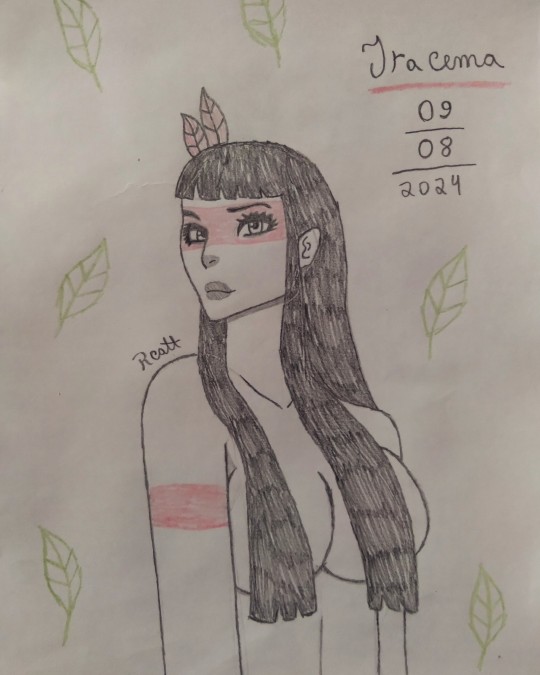
"A virgem dos lábios de mel, que tinha os cabelos mais negros que as asas da graúna e mais longos que seu talhe de palmeira"
#my draws#meus desenhos#arte#art#indigenous woman#mulher indigena#iracema#nativos#natives#jose de alencar#romances#09/08#dia mundial dos povos indigenas#povos indígenas#indigenous peoples#brazil#🇧🇷#natural#brasil#fanart#literature#literatura
3 notes
·
View notes
Text

Honoring my indigenous roots in my birthday!
1 note
·
View note
Text
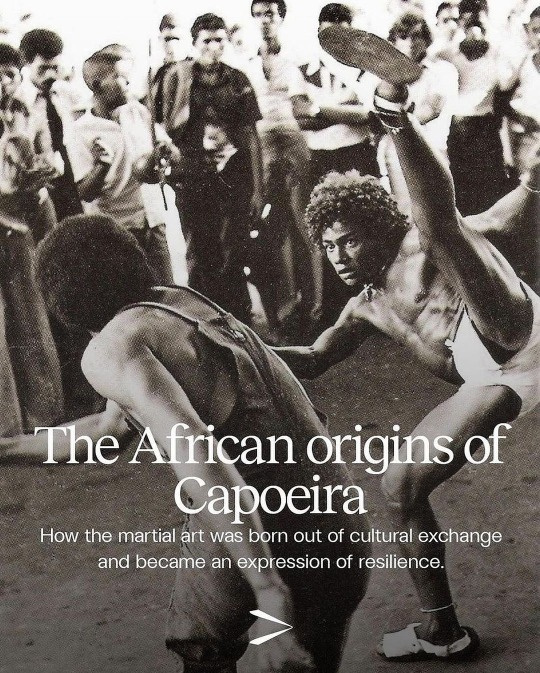
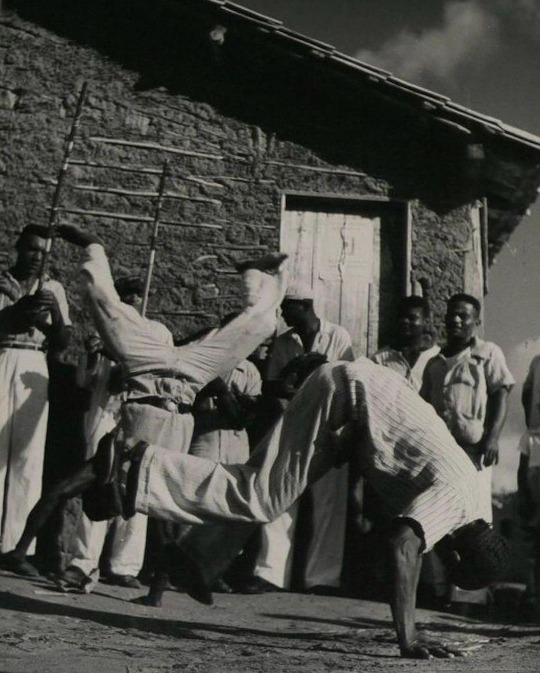
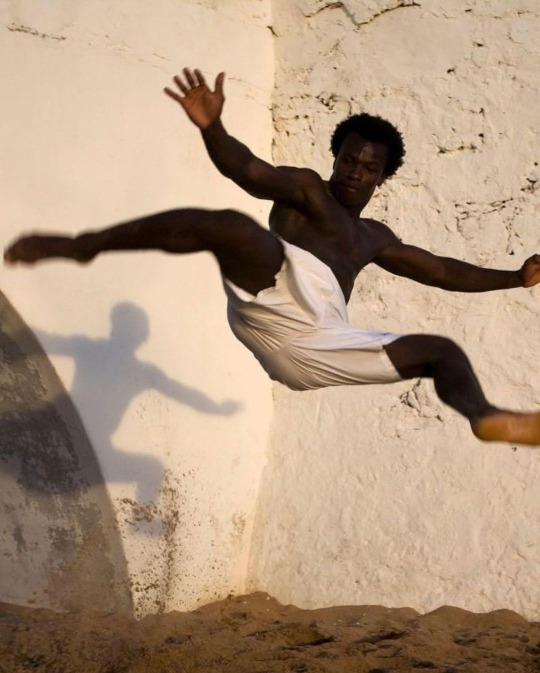

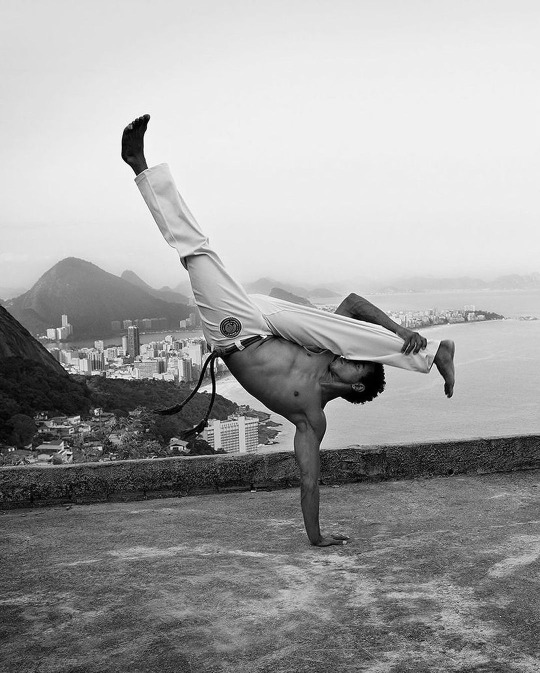
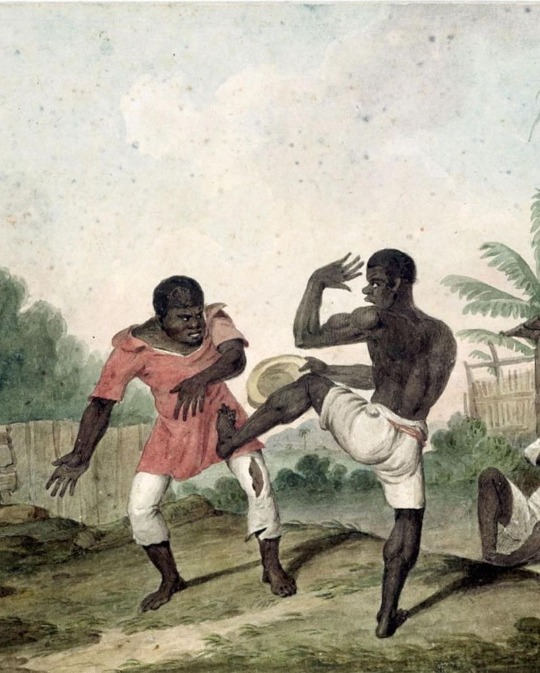
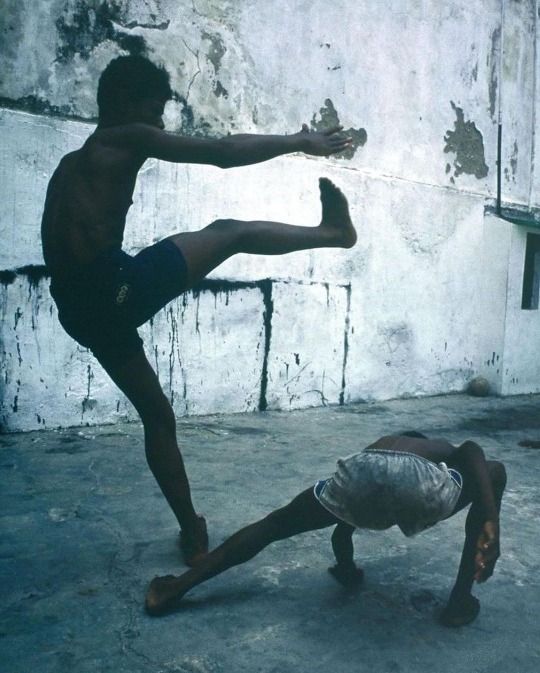
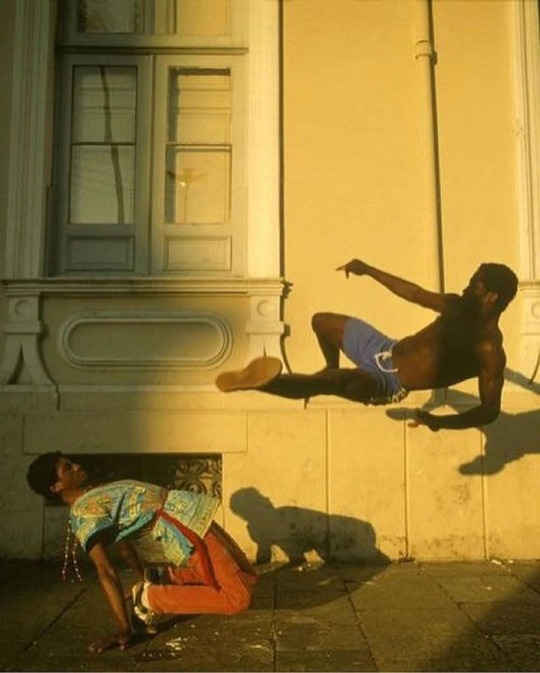
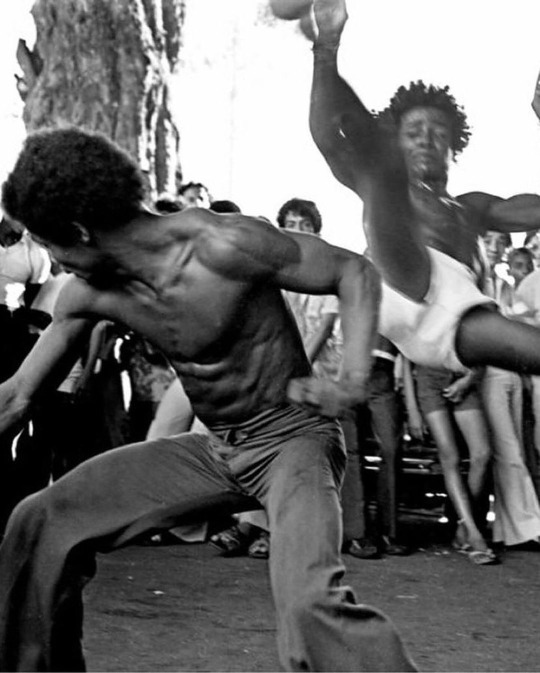

Repost from @moyoafrika
•
#repost• @whatsculture History Class: Tracing the roots of Capoeira. The Afro-Brazilian martial art form incorporates acrobatics, dance, folklore, and music. Two opponents play each other inside a circle (Roda) formed by the other players, who create rhythm for the game by clapping, singing, and playing traditional instruments. It’s the second most popular sport in Brazil and is practiced in different parts of the world today. To understand the significance, we look at how it is a phenomenon born out of migration.
“Capoeira was conceived in Africa and born in Brazil,’’ Mestre Jelon Vieira once said. As a colony of the Portuguese Crown, millions of Africans were shipped and sold in Brazil. There, enslaved Africans shared their cultural traditions, including dances, rituals, and fighting techniques, which eventually evolved into capoeira. Many elements and traditions that would inform capoeira are said to have originated in Angola. At that time, 80% of all enslaved Africans in Rio de Janeiro came from Central West Africa from countries that are now known as Gabon, Angola and both Congos.
People from Angola were prominent among the enslaved Africans who played the game on the streets and squares of Rio de Janeiro, Salvador and other Brazilian port cities at the beginning of the nineteenth century. With many enslaved Africans revolting against slavery, they would soon form communities in villages called quilombos in which they could sustain different expressions of African culture. They used capoeira to defend themselves and resist capture, disguising its martial intent with music, song, and dance.
Capoeira became illegal after the abolition of slavery in 1888. Practitioners were socially ostracised for more 40 years, until the legendary capoeira master, Mestre Bimba, opened the first capoeira school in Bahia in 1932. From there, the martial art would reach all parts of the world. At its core, capoeira is born out of a mix of African and Brazilian indigenous cultures and it represents resistance and resilience 🇧🇷🌍
#moyoafrika #brazil #angola🇦🇴 #africanculture #africanculture #africandiaspora #african
#african#afrakan#kemetic dreams#africans#brownskin#brown skin#afrakans#african culture#afrakan spirituality#capoeira#Brazilian#kids#koda#breakdancing
871 notes
·
View notes
Text


MARIAH ☆
officially introducing the main sim in my new gameplay series: mariah and the city!
full name: mariah nicole ibarra sign: taurus (april 20th) race/ethnicity: black & indigenous/latina 🇧🇷 likes: painting, alternative music, physical intimacy dislikes: deception, pet enthusiats, metal music friendships (in order of appearance) - • danai aljero (best friend) • penny pizzazz (childhood best friend) • chae-won man (close friend) relationships - • salim benali (first love, ex-boyfriend)




after a major depression, following a breakup with her first love, mariah is ready to get her head on straight. prioritizing her career in art, she is leaving little to no room for romance but isn't opposed to being whisked away by the right person
playlist | mood board

23 notes
·
View notes
Text
Ecologies of collapse in Palestine 🇵🇸
I don’t think we can solve the climate crisis if we can’t even decide whether or not Palestinians are going through a genocide.
I’m afraid the [dominant] environmental movement has failed to clearly define what it means to liberate the world from an oppressive system. Removing a part of the apparatus is not systemic change.
People have turned their backs on the United Nations 🇺🇳 for trying to call attention to the several human rights violations happening and that Israel’s government must be held accountable. Brazil 🇧🇷 government has named the incident one of the world's most terrible war crimes. Turkey 🇹🇷 has filed a lawsuit in international courts to hold the war criminal accountable. France 🇫🇷 has called for a ceasefire. None of these governments are innocent either, but it begs the question, why can't our governments take a stance against genocide?
Despite the rise of Islamophobia and antisemitism, we must continue to fight alongside our Muslim & Jewish communities, calling for an end to genocide. Critiquing an oppressive government should not be seen as antisemitic. Consuming ourselves to victimhood and weaponizing tears over the bloodshed of bodies blown up is a tool of the oppressor. A ceasefire includes the return of hostages. Validation of the count of death in Israelíes is also recognized. I don’t think many of the people asking for Free Palestine are not saying that both sides can’t grieve, but when it comes to weaponizing grief and tears to prohibit critiquing of a government, that is the issue. Media platforms are heavily censoring accounts while also perpetuating misinformation. When it comes to holding the government accountable, it seems that it can never be the case because one’s country is purely ethical and just does not exist where the majority of oppressive governments have conducted genocide, violence, and displacement under business.
Many of you were never on the same page with liberating the world nor my work. Many of you saw Indigenous communities as museums for your curiosity and inspiration for your spiritual journeys to repackage to people who lack depth in their relationship with the land. Many of you committed to Black Lives Matter because you extracted from Black culture for your benefit and recognized you weren’t as racist as your neighbor or friend. Many of you committed to LGBTQ+ movements only to know that your rainbow started in the US and ended in the US, but anything deemed othering is unattractive. Many of you became feminist under the guise of equality but for only those who looked like you.
But may we also have grace for those who are scared to speak up because their employers, friends, or opportunities are at the line, which could further cause them to be deprived in an economic system where people choose their ability to live and die. I’m not angry at you, nor do I know your situation, but I know my situation has allowed me to say I’ve already lost things I thought I wanted, but I’m still alive. Isn’t being alive the most sacred thing to ourselves that we don’t wish to be taken? It wasn’t a billionaire, corporation, or institution that kept me grounded and alive. It was my community that made sure I survived.
Remember, we can solve the climate crisis by bringing awareness to the horrors unfolding in Gaza.
#queerbrownvegan#social justice#environmental justice#intersectional environemntalist#intersectional environmentalism#free palestine#free gaza#gaza genocide#palestine genocide#climate crisis#activism#ecocide#climate change#environmentalism#sustainability
69 notes
·
View notes
Note
So you already discussed your hc for Luffy's ethnicity but what about the rest of the crew?
great question, i’ve been pondering about this for a while, it’s just when i saw luffy, i just knew he was my pasifika cousin 😭 i have reference sheets w all their hcs i’m working on to post later but let me go ahead n lay out rq how i would imagine the strawhats! i try to be as canon compliant as possible when assigning them.
usopp - afro-caribbean, specifically jamaican 🇯🇲
luffy - indigenous on both sides. so afro native samoan-brazilian. i stand by that forever. polynesian luffy real 🇼🇸🇧🇷. malagasy too. historically malagasy people are austronesian relatives as well anyway (malayo-polynesian) 🇲🇬
nami - thai-swedish. she’s ethnically fully thai, but when bellmere found her and nojiko, she took them to her hometown in sweden to be raised. im a firm believer in southeast asian nami 🇹🇭🇸🇪
zoro - afro japanese-caribbean. been a blasian zoro truther since day one. so japanese and haitian 🇯🇵🇭🇹
robin - double native as well !! native costa rican, the bribri people, and indigenous to eastern russia, yupik. she’s a challenge to figure out but i just know this is a native woman. 🇨🇷🇷🇺
jimbei - melanesian cousin fijian-indian !!! 🇫🇯🇮🇳
franky - italian american. only fueled by how water 7 is allegedly based on venice 🇮🇹🇺🇸 but also consider panamanian franky …🇵🇦 exactly. so he’s either panamanian or italian american to me
brook - afro-austrian ethiopian. an ethnically east african black man from austria(i also get new orleanian from him IF he were american)🇪🇹🇦🇹
chopper - if he were a human, indigenous canadian first nation (inuk) absolutely 🇨🇦
vivi - nubian and sudanese vivi on top !!! 🇪🇬 🇸🇩
sanji - french ……… 🇫🇷
i have headcanons for ace, sabo, dadan and some other characters too but this post is getting really long. to be continued !
72 notes
·
View notes
Text
Strawhats ethnicity HCS
Luffy- indigenous Brazil 🇧🇷 Tupi
Nami- Swedish-Sami tribe native 🇸🇪
Zoro- Japanese 🇯🇵 + Navajo native
Usopp- Papuan Melanesian 🇵🇬
Sanji- Albanian 🇦🇱 + German 🇩🇪
Robin- Yakut Siberian native 🇷🇺 + Inuit Kalaallit 🇬🇱
Franky- Hawaiian native
Brook- Aboriginal + Somali 🇸🇴
Jinbei- Indian 🇮🇳 + Fijian 🇫🇯
One piece.. MORE LIKE REZ PIECE
#one piece#monkey d. luffy#one piece nami#roronoa zoro#usopp#vinsmoke sanji#nico robin#cyborg franky#brook one piece#one piece jinbe
30 notes
·
View notes
Text

Meet Maria Felipa de Oliveira, the Black Woman Who Helped Brazil Gain Independence. She was one of 3 women that participated in the struggle for Bahia's independence in Brazil 🇧🇷 in 1823.
Overall she led around 200 rèsistance fighters using gùerrilla tactics (mostly Black and indigenous women). They continued to fight until the last Portuguese troops left the country on July 2nd, 1823.
Maria Felipa continued her life as a fisherwoman and capoeirista practioner, admired by the people of her island and all over Brazil. She dièd on January 4, 1873.
9 notes
·
View notes
Text

[ 🇧🇷 ] O Florão da América 🌻 / The Crocket of America
Let me make a small presentation of my main hetalia oc, Brazil! 👀 her human name is Mayara dos Santos.
She is a extroverted young woman who loves music and having tons of fun.
• Country name: República Federativa do Brasil
• Full name: Mayara dos Santos Silva
• Official language: Portuguese (but there are +200 Indigenous languages spoken in Brazil, besides German dialects in Southern regions and Portuñol)
• Basic info
—> Brazil is the largest country in Latin America and it is one of the most diverse countries in the world.
—> Brazil is the only country in the Americas that has Portuguese as its' official idiom.
—> It is very complex to represent Brazil due to its giant ethnic diversity and multicultural aspects.
—> When it comes to Biodiversity, Brazil is a world leader. Within its borders are more than 130,000 living species of flora and fauna (connectbrazil).
First image represents Brasília (Brasil's Capital, it is not Rio de Janeiro lmfao!) decorated with an Ipê-Amarelo tree (Ipê-Amarelo is the national flower of Brazil), 2nd image represents one of the many traditional dances of Brazil (this one is named Samba de Roda) and a beautiful Guaruba (it is not the symbol bird of Brasil, but it should become a candidate. I think it represents Brasil better than any other bird out there 😝 Guaruba/Ararajuba/Golden Parakeet is an endemic specie of Brazil, and even has Brazil's flag colors on its feathers!! I think it suits us perfectely — my bird lover side is speaking out too loud rn lol)
I decided copying it from my instagram, lol
95 notes
·
View notes
Text
Hazbin Hotel/Helluva Boss Character Ethnicities Headcanons
DISCLAIMER:
I am fully aware that a lot of the characters already have canon ethnicities of their own, so I'd just like to say that these "headcanons" are just for fun, and most of them don't really have all that much thought put into them, so don't be confused if you see something you find nonsensical. Let me know what y'all think lol.
Charlie: Swedish 🇸🇪
Vaggie: Salvadoran 🇸🇻 of half Indigenous and half Spanish descent
Angel Dust: Argentinian 🇦🇷 of Italian descent
Alastor: Portuguese 🇵🇹
Husk: Bulgarian 🇧🇬
Niffty: Filipina 🇵🇭
Sir Pentious: English 🏴 and Egyptian 🇪🇬
Cherri Bomb: Australian 🇦🇺 of Scottish descent
Vox: Ashkenazi Jew From Germany 🇩🇪
Valentino: Dominican 🇩🇴 of Half-West African and Half Spanish Descent
Velvet: Armenian 🇦🇲
Katie Killjoy: American 🇺🇸 of English Descent
Tom Trench: German 🇩🇪
Blitz: American 🇺🇸 of Italian Descent
Moxxie: Half American 🇺🇸 of Italian descent Half-Mexican 🇲🇽. The Mexican side has mostly Spanish DNA, with very little indigenous DNA.
Millie: American 🇺🇸 mainly of British descent, with some Native American and West African DNA
Loona: French 🇫🇷
Stolas: English 🏴
Stella: Russian 🇷🇺
Fizzarolli: Finnish 🇫🇮
Verosika: Thai 🇹🇭
Vortex: Ukrainian 🇺🇦
Striker: Spanish 🇪🇸
Asmodeus: American 🇺🇸 of West African Descent
Queen Bee: Brazilian 🇧🇷 of Lebanese Descent
#hazbin hotel#charlie morningstar#vaggie#angel dust#alastor#husk#niffty#sir pentious#cherri bomb#vox#valentino#velvet#katie killjoy#tom trench#helluva boss#blitzø#moxxie#millie#loona#stolas#stella#fizzarolli#verosika#vortex#striker#asmodeus#queen bee
25 notes
·
View notes
Text
Here’s some positivity for Brazilian systems!
Systems live, struggle, flourish, and thrive all over the world! Just because many vocal systems online live in North America or Western Europe does not mean that these are the only places systems live. In Brazil, we’re certain system life can be rich, beautiful, and community-driven! This post is for all the Brazilian systems out there!
🇧🇷 Shoutout to systems that immigrated to Brazil, or are Brazilians living in the diaspora outside of Brazil!
🌼 Shoutout to Brazilian systems who are also indigenous, or who are indigenous people residing in Brazil!
🇧🇷 Shoutout to systems whose plurality is inherently connected to Brazilian customs and culture!
🌼 Shoutout to Brazilian systems who are bilingual, who love the Portuguese language, or are studying Portuguese or an indigenous language of Brazil!
🇧🇷 Shoutout to Brazilian systems who love their nation’s rainforests, who advocate against deforestation and work to preserve their nation’s biodiversity!
🌼 Shoutout to disordered Brazilian systems who struggle to find healthcare due a lack of providers in their area!
🇧🇷 Shoutout to Catholic, Spiritist, and medium systems in Brazil whose plurality is based in their religion!
🌼 Shoutout to Brazilian systems with introjects of Brazilian characters, celebrities, or public figures!
🇧🇷 Shoutout to Brazilian systems who love their nation and relish taking part in Brazilian holidays, traditions, and celebrations!
🌼 Shoutout to Brazilian systems who have concerns about their country, who advocate for positive societal change!
Whether you’ve always lived in Brazil, you lived there briefly, or you’ve never been there but it’s a part of your heritage, know that as a Brazilian system you bring a unique and wonderful perspective to the plural community. We are so very grateful to have you here, and hope that you can continue to find joy and belonging in our spaces! Please try your best to take care of yourself and your system, and have an absolutely lovely day!

(Image ID:) A pale orange userbox with a cluster of multicolored flowers for the userbox image. The border and text are both dark orange, and the text reads “all plurals can interact with this post!” (End ID.)
#multiplicity#pluralgang#plurality#actuallyplural#system positivity#plural positivity#plural pride#system pride#brazil#brazilian systems#brazilian plurals
25 notes
·
View notes
Text
seven minutes to heaven is a global coed idol group based in seoul, sk debuting in summer of '23 under hybe entertainment. our sound is heavily influenced by soul music, rock n roll, east coast rap and the music of the carribbean & brazil.
known for most talented idol group. each members song wrote or produced hundreds of hit songs for multiple artists. theres been a few years where all the songs on the radio are produced / song-wrote by someone in smth. also the idol group with the most global hits, especially if you add the members solo projects.
brand ambassadors victorias secret, bape, babyphat, edhardy, christian loubiton.
nicknames angels, charlies angels.
collaborations with PSWG & tokidoki.



introducing my group.
were all very eccentric, fashionable, witty, funny and charismatic. all considered it girls/ it boys of 4th gen, but we each have drastically different reputations and personalities.
the group has two major sub units divided by gender. the female sub unit, soul, has an angel related mascot & the male sub unit, spirit, has a demon related one.

now introducing all fourteen of my group members, plus a song that reminds me of them
03 line (the best line)
"arrasando - thalia"
name barbie
rep color pink & red
origin 🇯🇲🇵🇦, african descent, from harlem nyc.
introspective, bubbly, funny.
im the "weird one"
i have a truck load of hobbies.
"oh no! - marina & the diamonds"
name mimi
rep color purple
origin 🇹🇹, indian descent, from harlem nyc
awkward, overthinks, "magical" allure,
was valedictorian. college student.
"main character" energy.
the obligatory "smart one" .
"bombs over baghdad - outkast"
name selena / suki
rep color blue
origin 🇧🇷, mostly east asian descent, from bklyn nyc.
relaxed, loud, blunt.
sporty, artsy.
the "cool one"
"on & on - erykah badu"
name lotus
rep color yellow
origin 🇧🇷, east asian & indigenous descent, from bklyn nyc.
quiet, kind, demure.
spiritual, vegan, animal lover.
the "nice one"
"bang - trippie red"
name kenneth / ken
rep color red & pink
origin 🇹🇹, indian descent, from queens nyc.
eccentric, party animal, lazy, snarky, fun, irresponsible.
just be doing anything.
the "dumb one"
"gov'nor - JJ DOOM"
name jason / jj
rep color purple
origin 🇯🇲, chinese descent, from queens nyc.
laid back, kind, lazy, delulu, party animal.
"main character" energy x2
the "geeky" one.
"do it again - nle choppa"
name francisco / chico
rep color blue
origin 🇧🇷, mostly african descent, from bklyn nyc.
sensitive, hyper masculine, loud, obnoxious.
knows everyone
car guy / street racer.
the "popular one"
"space cadet - metro boomin"
name casper
rep color yellow
origin 🇧🇷, mixed descent, from bklyn nyc.
quiet, creepy, airhead.
deejay, lowk a pothead.
the "creepy one"






02 line
"keep ya head up - 2pac"
name aaliyah
rep color orange
origin 🇭🇹, african descent, from bx nyc, also lived in atl for a few years.
stubborn, tomboyish, loyal, crafty, sarcastic.
country gorl.
can shoot a gun.
the "mom" of the group.
"psychosocial - slipknot"
name regina
rep color indigo
origin 🇵🇷🇺🇸, mixed, from bx nyc.
intimidating, smart, empathetic, short tempered.
emo, rockstar aura.
the "mean one" of the group.
"labels or love - fergie"
name siegelinde
rep color green
origin 🇭🇹, korean descent, from queens nyc.
generous, fashionable, dramatic.
theatre kid downnn.
the "diva" of the group.
"rock n roll music - chuck berry"
name alejandro
rep color orange
origin 🇭🇹🇩🇴, mixed descent, from east harlem nyc.
old soul, smart, serious, hardworking.
spiritual, college student.
the "dad" of the group.
"mississippi queen - mountain"
name reggie
rep color indigo
origin 🇨🇺, wasian descent, from bx nyc.
short temper, forgiving, mature, intense.
workaholic.
the "uptight" member. (not when hes drunk tho)
"i love your smile - shanice"
name otto
rep color green
origin 🇭🇹, african & korean descent, from harlem nyc.
poetic, peaceful, smiley, childish
intense sweet tooth.
unintentionally funny, weird.
the "baby" of the group.
4 notes
·
View notes
Text
Reflections on a Year of Reading Brazilian Literature 🇧🇷
Books Read This Year; Backlands: The Canudos Campaign by Euclides da Cunha, Macunaíma: The Hero With No Character by Mario de Andrade, Hippie by Paulo Coelho and Captains of the Sands by Jorge Amado
All throughout the year, my piece of Brazilian literature mostly focused on the northeastern part of Brazil. In Backlands, I explored the northeastern part of Brazil. With its dry, arid and empty lands, I learned of the mountains and sertões surrounding areas like the Bahia, Alagoas, Pernambuco, Ceara, Piauí and Maranhão. During the summer, the sertão is known for being so dry that even rain is impossible to get. Macunaíma mostly takes place in Brazil's beautiful, lush and dense rainforests with its main character, Macunaíma growing up and living there. Before he became the Hero With No Character, he was thrown away by his mother in a spacious clearing within the beautiful forest. Captains of the Sands takes place in the Bahia, specifically the capital, Salvador. Based on the fact that the Captains lived on a warehouse along the docks of Salvador, I learned that it was somewhat of a coastal city, with beautiful beaches and a lot of vendors surrounding it.
While reading these books, I learned a good amount of Brazilian history. For example, In Backlands, I learned about Antonio Conselheiro, a rebel that led one of the bloodiest uprisings in Brazil. Before this, his family was known as a dangerous family, killing several rich people and pillaging their fortunes. Conselheiro changed that when he decided to become a leader and try to help the northeast be free of southern rule. Macunaíma, however is slightly different. It is neither fully history nor truth, rather a mixture of both. Since almost all of the characters in the book are fake, the events that happen throughout the book are real and always tie in with Macunaíma and his brothers' escapades. Hippie takes place in the 70s and the 70s was a strange time for the world. While reading that book, I learned more about the hippie movement, especially about magic buses, buses that would travel entire continents to get their inebriated passengers to spiritual places like Nepal, for instance. Coelho and his new friend travel from Amsterdam to Kathmandu and on the way, they stop in Constantinople which is now know as Istanbul. I also learned that many. "hippies" were not dedicated to the lifestyle. They merely saw it as a trend and rolled on with the times. Many gave up and returned home to get real jobs and start families after they were done "exploring."
Brazil's culture is very rich and while Hippie doesn't strictly talk about it, Macunaíma does. Many of the adventures Macunaíma and his brothers go on inadvertently cause some shift in Brazilian culture. When Macunaíma first met Ci, the amazon queen of the forest and married her, she later on died and became a star and gave Macunaíma a talisman that was then taken from him and he embarks on a journey to find it. Later on in the book, Macunaíma travels to São Paulo where he attends a festival and talks about the Cruzeiro do Sul and how it is a god, not just a cluster of stars. Mainly, the first few chapters take many things from indigenous culture in Brazil. For example, the author, Mario De Andrade made Macunaíma's catchphrase, "Aí, que preguiça!" which is a fusion of Portuguese and the Tupi language. "Aí," means sloth in Tupi, whereas "preguiça" is the Portuguese word for sloth. This book was also published during Brazil's famous modernism movement. Some say it was one of the founding pieces of literature for the movement. It was published six years after the "Semana de Arte Moderna," and symbolized the beginning of the movement.
From Backlands: The Canudos Campaign, I learned that despite facing difficult odds, in life you must over come that adversity and keep moving on. While reading Macunaíma: The Hero With No Character, I learned that in life, your identity is fluid and it can change many times, so don't try to suppress or change it. In Hippie, I learned that in order to live life, you must embrace the unknown and challenge yourself. Take risks and learn before its too late. Finally, I Captains of the Sands, I learned that I should not let my circumstances dictate who I am or what I am going to be. In life, there will be people who put pressure and doubt your abilities because of where you are from and you shouldn't let that shake your worth.
Some things I learned about myself while reading these books is that I love Brazilian literature. It is incredibly abstract and different than English or American literature. Although some literary works may be difficult to comprehend (mostly because of translation), I think that reading books from a different country can change your previous perspective on a country, it sure changed mine. It made me want to learn more about Brazil and ignited a new flame for Brazilian literature. While I am not done with Captains of the Sands, I will continue to read it because its a well-written book full of humor and societal commentary. This is my OFFICIAL final blog post. Acabou, and muito obrigado. victoriasbrazilianlitblog, out!
Word count: 834
#hippie#brazilian literature#paulocoelho#macunaima#mariodeandrade#jorge amado#brazil#captainsofthesands#bahia
3 notes
·
View notes
Text

Ya'Wara from DC Comics Aquaman is Brazilian and a member of the Tapirape Tribe 🇧🇷
Her plane crashed in the Amazon Rainforest when she was little and was thus raised in the Tapirape Tribe - I don't know if it's mentioned if she is Indigenous herself.
Please let me know if any info is wrong :)

5 notes
·
View notes
Text
yes I will die on this hill but I hate how some hispanic latines think speaking spanish is the sole attribute that unites all latines and other people living in latin american territories it's extremely stupid not only because it excludes numerous groups of people (indigenous peoples whose original languages are dying, descendants of latines who weren't taught how to speak spanish to "adapt better" which is a whole documented phenomenon and the non-hispanic people of an entire nation that happens to be the largest and most populous country in latin america 🇧🇷) but also ascribes our identity to something that was literally forced upon us by our colonizers.. and allows european hispanics, the descendants of those colonizers, to pretend they're 'ethnic' because they were the ones who invented that language
5 notes
·
View notes